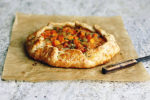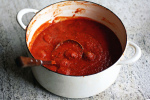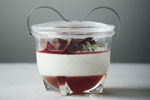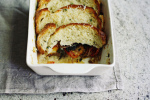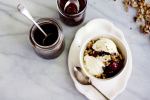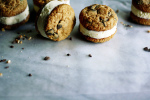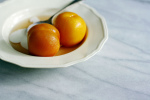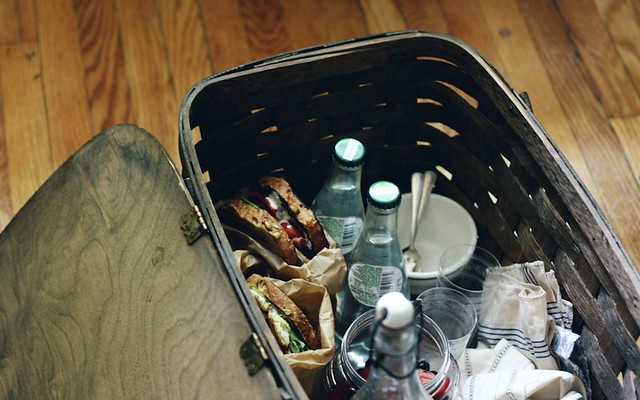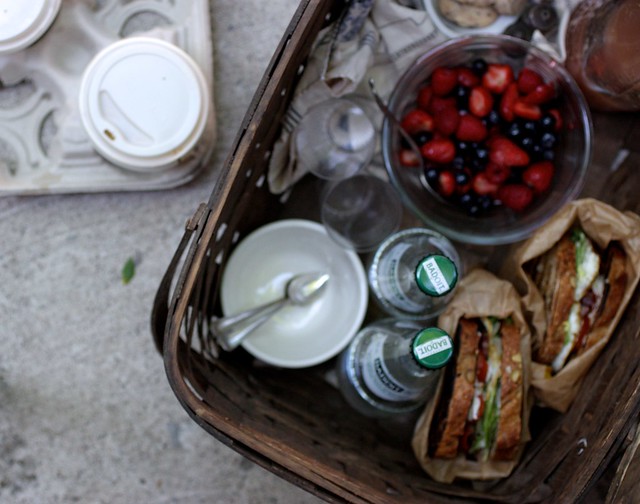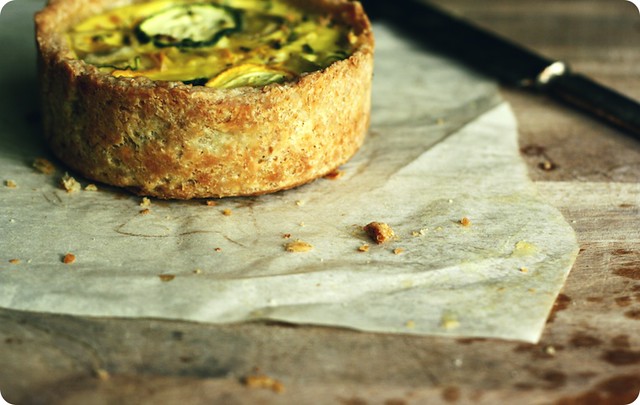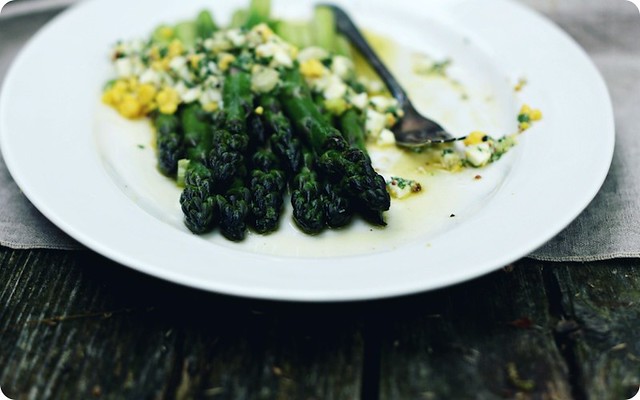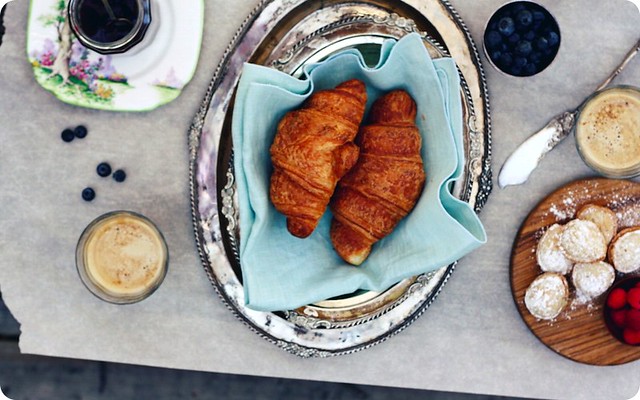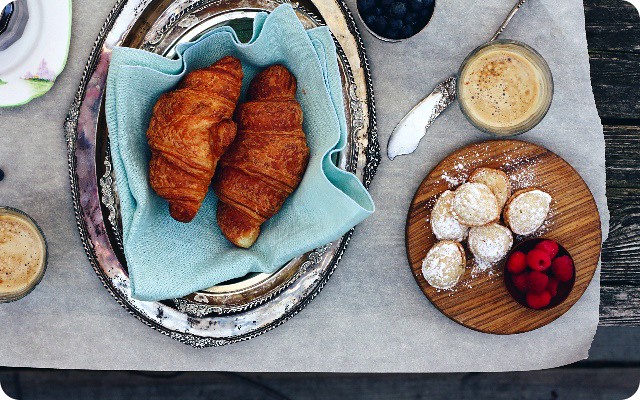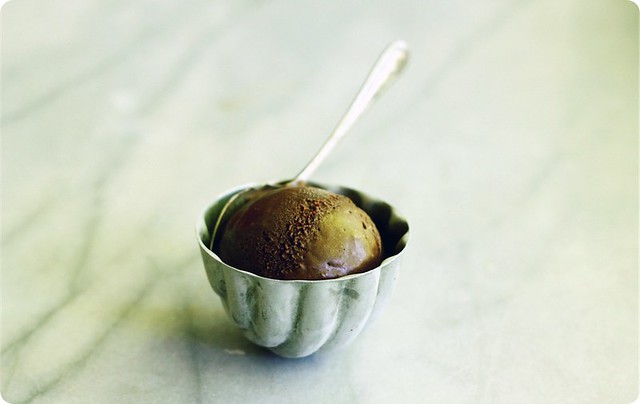
Go grab a calendar. Circle this coming Saturday with the most attention-grabbing ink you can find. If you start right after we're done here, you'll only be five days away from this chocolate ice cream, the chocolate ice cream, as far as we're concerned today.
It comes by way of one Fergus Henderson, famous of the restaurant St. John and Michelin stars, Nose to Tail, and of parsley salad and marrow bones. And in my book, chocolate ice cream, too.
Boy oh boy, does he ever know a thing or two about chocolate ice cream.
The recipe was in The Observer ages ago, way back in March. In March I wasn't ready for ice cream. Not yet. We were in the beginning throes of the coldest, wettest spring of memory. Darn that rain. Then I saw it elsewhere, only last week, at the exact right time.
I didn't wait. I like you a lot, so I wanted you to know that you shouldn't either.
Let's have at it. The process is the usual for a custard-based ice cream with a couple of essential quirks to make this one marvelous. I'd expect nothing less with such a pedigree.
It begins with eggs and milk whipped together to frothy, pale lightness; hot, cocoa-stained milk added to those, then melted chocolate. The mix is cooked over gentle heat until it begins to give some resistance to the spoon as you stir.
Many recipes, most recipes, for chocolate ice cream would end there with the instruction to chill and churn the base, and you're done. We, however, have one more step to go. Time for caramel.
Yessiree, caramel. It's easy enough; sugar and water in a pan, cooked to bubbling, deep amber, subdued with a swirl of cream. The combination will sputter and spit quite wildly for a moment, but then the sugar relaxes into the calm whiteness, and, there you are, with a cream caramel. It is stirred into the custard all gets tucked in the fridge.
We wait. The base needs to sit and settle. Two sleeps later the ice cream machine revs up for its workout and churns the custard to the frosty consistency of soft-serve. You could eat it right there. I was tempted to eat it right there. But, no, press on, time for the the freezer. And, bear with me, we wait again. Did I forget to mention that? Three days this time. You might want to push the container all the way back to the far reaches of the freezer as to avoid temptation upon each opening of the door. If you've got a pack of frozen peas in there, put the bag in front of the ice cream and save yourself the heartache.
Then, one day, the wait's over and there's sunshine and a deck waiting for some company. And it's time for ice cream.

It is a grown up ice cream, which is not to say our boys didn't get chocolate mustaches (and beards, fingers, hands and shirts) from eating this out of sugar cones on said back deck, because they did, but moreover to give you a sense of this ice cream's elegant civility. Bright and perky it isn't.
It is densely aromatic, less of milk and more of cocoa bean. It has a musky darkness that rumbles low like a mumur in the back of your throat. The suggestion of bitter, balanced sweetness is mentioned first by chocolate, then the cocoa, then again with the burnt edge of caramel. It's the best kind of companionship amongst them, equal collaborators to the whole.
It is weighty, on the palate and upon the tongue; straight out of the freezer it is like cold fudge, as it melts, it's hard to describe - reminiscent of pudding, although more velvety than that.
This ice cream does not require embellishment or accompaniment. It was, as it was, everything it needed to be. Right there, out back, on that second step I like so much, our summer started. And in five days, yours can too.

Chocolate Ice Cream
Fergus Henderson’s recipe, rewritten from versions in The Observer and Bon Appetit.
For the chocolate custard base
200g dark chocolate, at least 70% cocoa solids, chopped
6 large egg yolks
115g caster sugar
500ml whole milk
40g cocoa powder
For the caramel
70g caster sugar
75ml water
50ml double cream
Make the chocolate custard. Place the chocolate in a small bowl set over a pot of simmering water, making sure that the bowl does not touch the water. Stir until the chocolate is melted, then remove the bowl from the heat and set aside to cool.
In a medium, heavy-based saucepan, whisk the milk and cocoa powder over medium heat together until the mixture comes to a gentle boil. Set aside.
Prepare an ice bath and set a bowl in it.
In another bowl with a whisk, electric beater or stand mixture, beat the eggs and sugar together until the colour has lightened and the mixture is thick, around 5 minutes. At this stage, the mixture should fall back upon itself in a ribbon when the beaters are lifted. Whisking constantly, pour the hot milk into the yolk mixture in a thin, steady stream. Return the mixture to the saucepan and whisk in the melted chocolate.
Cook over a low heat, stirring often, until the mixture thickens. This should take around 8 minutes. Remove from heat and set aside.
Make the caramel. In a small, heavy-bottomed saucepan, stir together the sugar and water. Bring to a boil over a medium heat, stirring until the sugar is completely dissolved. Raise the heat to medium-high and continue to boil, without stirring, until the sugar turns a deep amber caramel, around 5 minutes. Off the heat, gradually whisk in the cream. Slowly and carefully whisk the caramel into the chocolate custard base. Once fully incorporated, strain the custard through a fine-meshed sieve into the bowl over the ice bath. Stir occasionally until the custard is cool, then cover and chill in the fridge for 2 days.
Freeze the custard base in an ice cream machine as per manufacturer's instruction. Once churned, transfer to a clean container, cover and freeze for 3 days to allow the flavours to develop.
Makes 1 litre.
Notes:
- British double cream has a butterfat content of about 48%. Lacking that, I used a 35% cream without difficulty or complaint. Caster sugar is also sold as superfine sugar.
 Friday, July 15, 2011 at 3:26PM
Friday, July 15, 2011 at 3:26PM  kinfolk magazine in
kinfolk magazine in  announcement
announcement 

